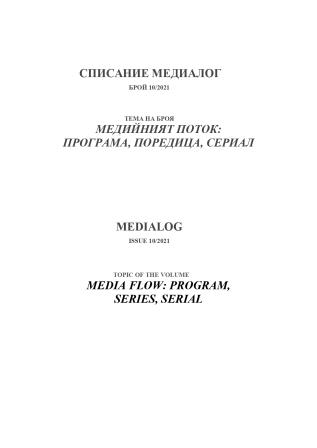Сериализирането в международния информационен поток
Serialization in the international information flow
Author(s): Maria NeikovaSubject(s): Politics / Political Sciences, Christian Theology and Religion, Politics, History, Anthropology, Philosophy, Social Sciences, Theatre, Dance, Performing Arts, Language and Literature Studies, Economy, Education, Law, Constitution, Jurisprudence, Fine Arts / Performing Arts, Cultural history, Foreign languages learning, Psychology, Music, Photography, General Reference Works, Geography, Regional studies, Visual Arts, Human Geography, Regional Geography, Applied Geography, Aesthetics, Political Philosophy, Social Philosophy, Political Theory, Political Sciences, Civil Society, Governance, Public Administration, Public Law, Communication studies, Sociology, Comparative history, Diplomatic history, Economic history, History of ideas, Local History / Microhistory, Military history, Oral history, Political history, Social history, Theology and Religion, Comparative Studies of Religion, Religion and science , Film / Cinema / Cinematography, Philology, Source Material, Sociology of Art, Sociology of Religion, Sociology of Law, Geopolitics, History of Religion, Rhetoric, History of Art, Court case, Comparative Law, Administrative Law
Published by: Факултет по журналистика и масова комуникация, Софийски университет „Св. Кл. Охридски”
Keywords: international journalism; borrowing serialization; horizontal serialization
Summary/Abstract: In the proposed text is sought to answer the question of whether and when we can talk about serialization in the international information flow. An attempt has been made for some systematization of the possible types of serialization, among which the anniversaries stand out. There are two major branches – the traditional serialization and the one generated by the possibilities of new technologies. The example with the ‘Tiananmen Papers’ is considered in more detail. It is also worth noting the borrowing serialization, shown in two examples of connecting processes in the present with such from the recent or very distant past.
Journal: Медиалог
- Issue Year: 2021
- Issue No: 10
- Page Range: 70-83
- Page Count: 14
- Language: Bulgarian

